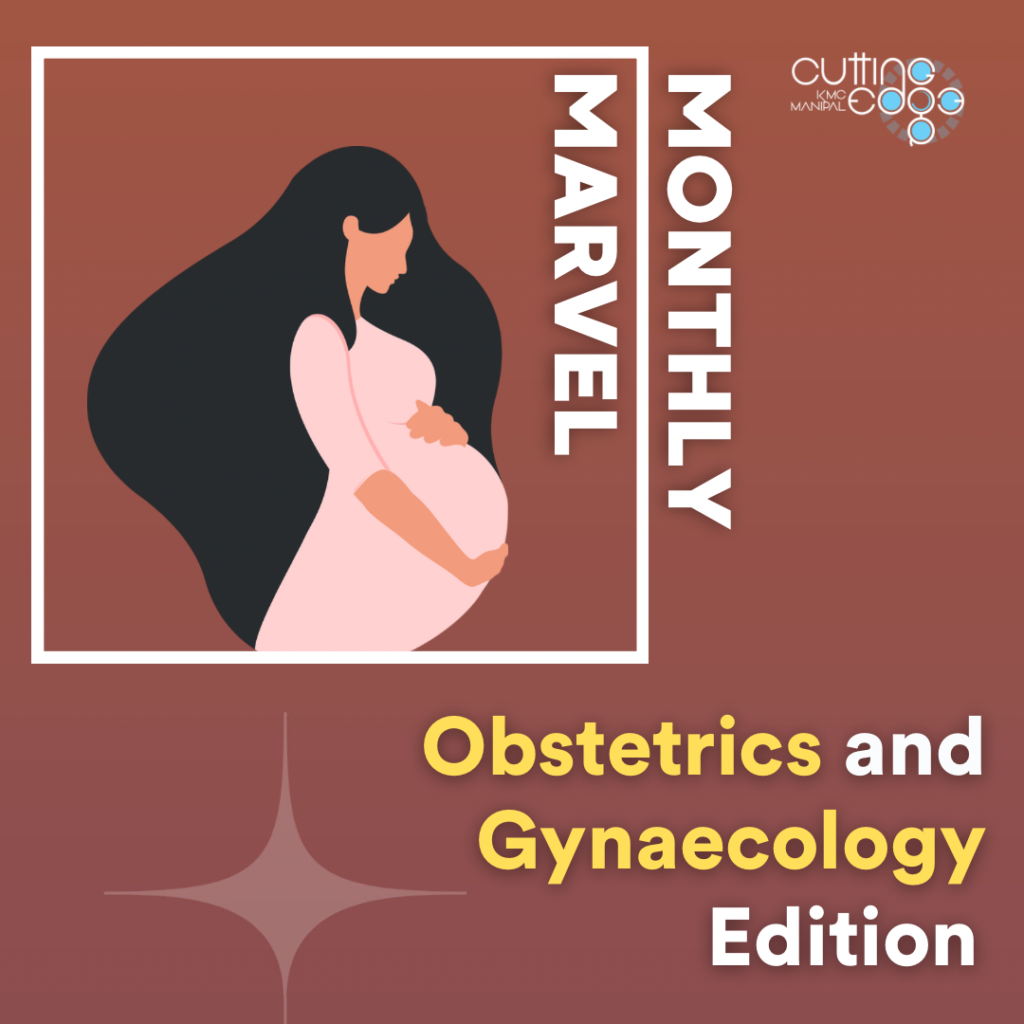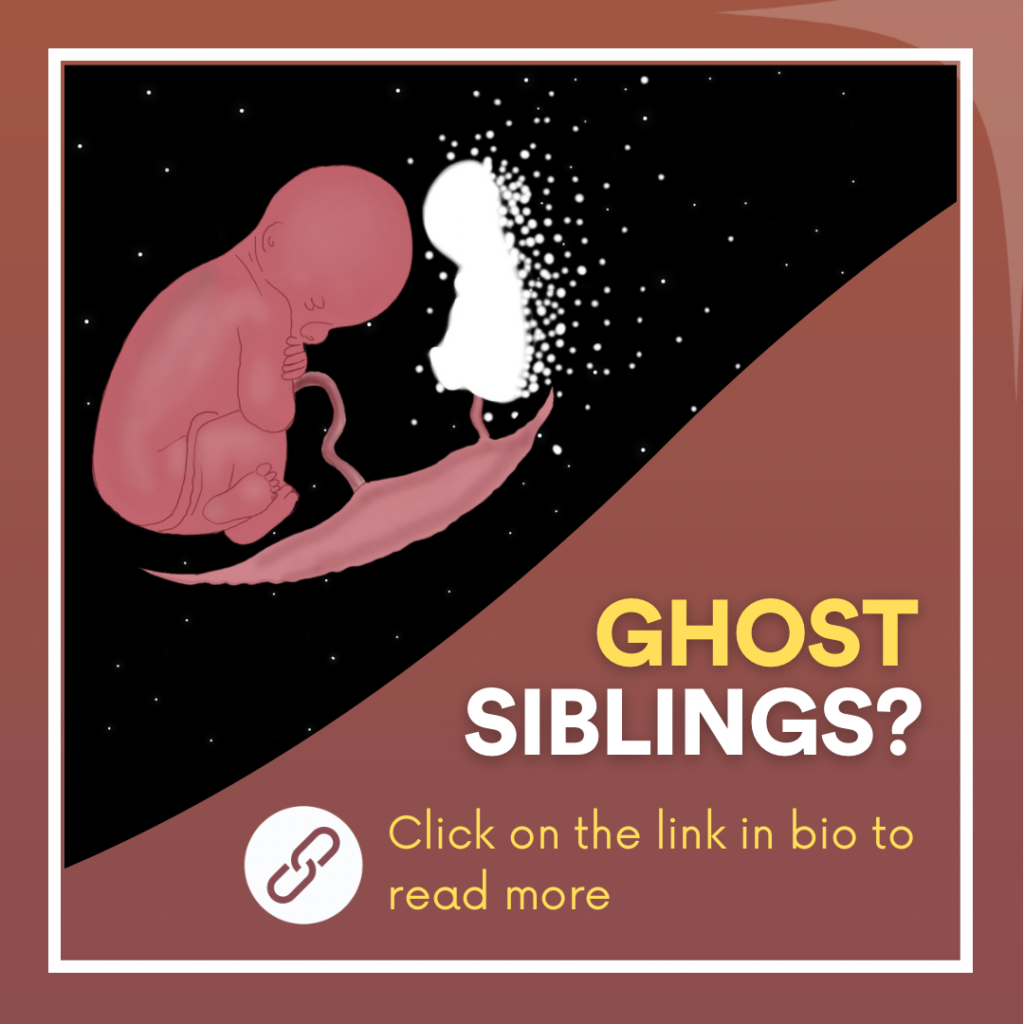Content by: Bhavya Jain, Niharika
Design by: Elvin Joshua Pinto, Bhavya Jain


INTRODUCTION
Vanishing twin syndrome, commonly known as the lost twin, is a condition that occurs in multigestation pregnancies, where one or more foetuses die in utero. The foetal tissue is later absorbed by the other twin, placenta, or the mother, creating the appearance of a “Vanishing Twin.”
ETIOLOGY
In the majority of cases, the cause of the vanishing twin remains unknown, but certain etiological factors are associated with the loss of the embryo. These factors include:
1. Advanced maternal age (usually more than 30 years).
2. Chromosomal abnormalities in the deceased twin.
3. Use of assisted reproductive techniques (ART) such as in vitro fertilization (IVF), increasing the incidence of multiple gestations.
4. Small placenta or other anatomical abnormalities of the placenta
5. Genetic and teratogenic factors.
PATHOPHYSIOLOGY
While the single foetal loss during the first trimester seems not to impair further development of the surviving twin, a loss in the second or third trimester is a rarer complication of twin pregnancies. Studies have found the placenta’s foetal surface to be an empty, flattened sac—a sign of the disappearing twin. The vanishing twin may have several outcomes, including:
1. Resorption: Occurs from as early as the seventh week to as late as the twelfth week of gestation, usually without affecting the co-twin.
2. Blighted ovum: The gestational sacs are present, but no embryo can be visualized inside via ultrasonography, often resulting in vaginal bleeding in the first trimester.
3. Fetus Papyraceous: The fetus becomes mummified, compressed, or flattened between the membranes of the other viable foetus and the uterine wall, a rare complication that usually occurs in the second trimester.
Vanishing twin syndrome may also leave the surviving twin with a birthmark as a sign of the foetus lost in utero.
SYMPTOMS AND SIGNS
The signs of vanishing twin syndrome are similar to common symptoms experienced during the first trimester of pregnancy. The most likely clinical presentation includes vaginal bleeding or spotting, uterine cramps, and pelvic pain.
DIAGNOSIS
The only way to diagnose such a pregnancy is through ultrasound, where an embryo present in an earlier ultrasound is no longer detected.
HCG levels in the body provide clues to the progression of a pregnancy. Pregnancies with vanishing twins demonstrating a slower rise of hCG compared to normal twin pregnancies.
Maternal serum pregnancy-associated plasma protein-A (PAPP-A) and serum-free B-human chorionic gonadotrophin (B-HCG) can also be used in the first trimester to diagnose this condition.
MANAGEMENT
Medical
For an uncomplicated vanishing twin pregnancy lost during the first trimester, no special medical care is necessary. If a foetus papyraceus remains, close monitoring of the live foetus through serial ultrasonographic evaluations is recommended.
Risks include premature labor, obstruction of labor, preeclampsia or death of the surviving foetus due to placental abruption or chorioamnionitis.
The surviving twin is also at risk for low birth weight and small for gestational age (SGA), with an increasing risk for vanishing twin occurring later in gestation.
Careful observation for infection and consumptive coagulopathy is crucial.
The viable twin should receive specialized medical care as indicated by the initial physical examination and subsequent mental and physical development. Follow-up with pediatric assessment and long-term monitoring is essential.
Pre- and post-conceptional counseling should be provided for genetic anomalies.
Surgical
Dilation and curettage should only be performed after ultrasonographic confirmation that a viable embryo or foetus does not exist.


REFERENCES:Zamani Z, Parekh U. Vanishing Twin Syndrome. [Updated 2023 Jul 25]. In: StatPearls [Internet]. Treasure Island (FL): StatPearls Publishing; 2023 Jan-. Available from: https://www.ncbi.nlm.nih.gov/books/NBK563220/Stefanescu, Bogdan Ioan et al. “Single Fetal Demise in Twin Pregnancy-A Great Concern but Still a Favorable Outcome.” Diseases (Basel, Switzerland) vol. 9,2 33. 29 Apr. 2021, doi:10.3390/diseases9020033